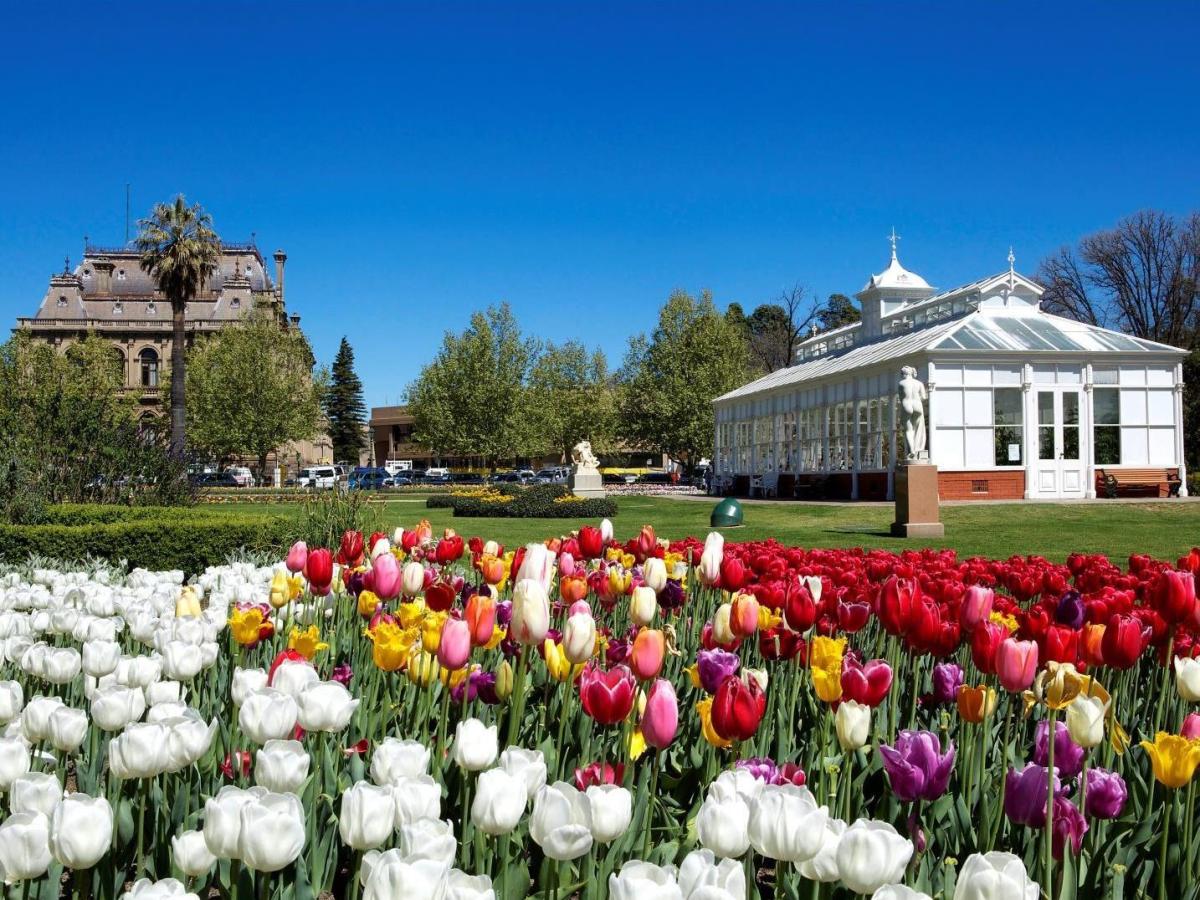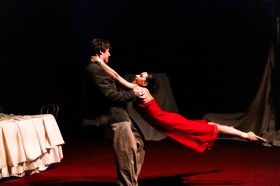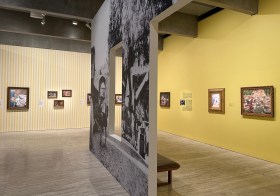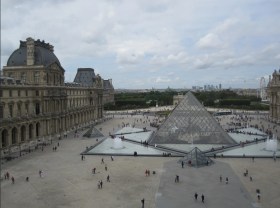Photo credit: Jason Tavener
While it’s easy for artists to obsess about the contribution the arts make to a city’s vibrancy, doing so can sometimes mean we overlook other important aspects of culture: food and wine, community celebrations, customs and traditions.
Located some 152km north of Melbourne, the regional City of Greater Bendigo has a vibrant culture in which the arts are celebrated alongside a wide range of additional activities, ranging from the annual Vegecareian Festival – a celebration of food, animals and life – the Heathcote Wine and Food Festival and Bendigo Uncorked Week, through to volunteer-run events such as the Bendigo Blues and Roots Music Festival.
It’s little wonder that Bendigo – alongside neighbouring municipalities Central Goldfields Shire, Hepburn Shire and Mount Alexander Shire – was selected to host the inaugural Regional Centre for Culture, a year-long program of cultural activities.
‘Dating right back to the Gold Rush … Bendigo has had a strong identity – it has been a very self-sufficient, sophisticated town for a very long time, but the region itself has offered all sorts of resources to artists for a really long time as well,’ said Jo Porter, co-producer of the Regional Centre for Culture program.
Fellow co-producer Elizabeth Walsh agreed. ‘It’s quite a vital place – there’s a huge music community in Bendigo, for example. It has its own symphony orchestra, there’s a whole lot of pipe and brass bands throughout the region as well, so there’s quite a vibrant culture of people engaged in activities that are secondary, if you like, to their real jobs.’
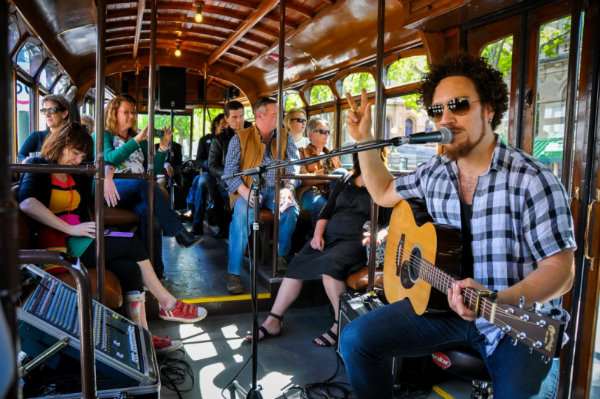
Bendigo’s Blues Tram; image supplied.
Also contributing to the unique culture of Bendigo is the community’s respect for art and artists, a value that is deeply embedded in the region.
‘Bendigo and the region recognise that artists are contributing to the social cohesion and the richness of culture in ways that they might not always be able to always fling money at, but they do turn out for them. The Bendigo Blues and Roots Music Festival is completely reliant on volunteers, and tens of thousands of people in Bendigo show up to see local roots and blues musicians. It’s quite incredible,’ Walsh said.
Now in its eighth year, Bendigo Blues and Roots Music Festival features more international acts than ever before – but it is primarily a celebration of place, according to Festival Director Colin Thompson, as well as celebrating great music.
‘This is first and foremost an event that sheds a light on local and independent talent and shows off Bendigo’s venues and our city itself. If it wasn’t for the local musicians, venue operators and community members rolling up their sleeves and pitching in to help, our festival wouldn’t exist. We welcome visitors from everywhere, but we’re proud to show off “Bendigo at its best,” every November and during the other events we stage and co-promote through the year,’ Thompson said.
A season of culture
The coming months feature a wide range of cultural activities in and around Bendigo, making the city the ideal destination for cultural tourists this Spring.
Bendigo Art Gallery of Bendigo hosts not one but two major exhibitions, including a celebration of the renowned Mexican artist Frida Kahlo.
Exclusive to Bendigo Art Gallery from 8 December 2018 – 10 February 2019, Frida Kahlo, her photos draws from the extensive archive of the Casa Azul (Blue House), Kahlo’s former home and now a museum dedicated to this much loved artist’s life and work.
And running from 6 October 2018 – 10 February 2019, Gothic Beauty: Victorian notions of love, loss and spirituality traces early Victorian rituals of mourning and the pursuit of ‘pleasurable terror’ evident from the 1800s to contemporary times.
‘Gothic Beauty will highlight the many motifs and ideas that emerged in the late 18th century and were cemented during the Victorian period – supernatural fixations, the thrill of terror, the mysteries of the afterlife – all of which carry through to the present day and continue to inform and inspire contemporary artists,’ said Karen Quinlan, Director of Bendigo Art Gallery.
‘We are delighted to be able to draw on our own, and the State’s finest collections – including the National Gallery of Victoria, State Library Victoria and Museums Victoria – to bring this evocative exhibition to life,’ she added.
Lovers of architecture, meanwhile, have the opportunity to exchange views and engage in discussion about the future of Bendigo as a well-designed city, when Open House Bendigo takes place over the weekend of 27-28 October.
The two-day event will see a series of private homes, civic buildings and buildings of architectural significance open their doors for viewing, allowing locals and visitors alike to explore spaces that are not normally open to the public.
Foodies are also catered for in the coming months – including vegans. Running from 10am to 3pm on Saturday 6 October at Bendigo’s Great Stupa, the Vegecareian Festival is all about loving food, loving animals and loving life. Featuring a wide range of stalls and activities, it encourages people to care for their health and care for animals through an increase in a vegetarian or vegan diet.
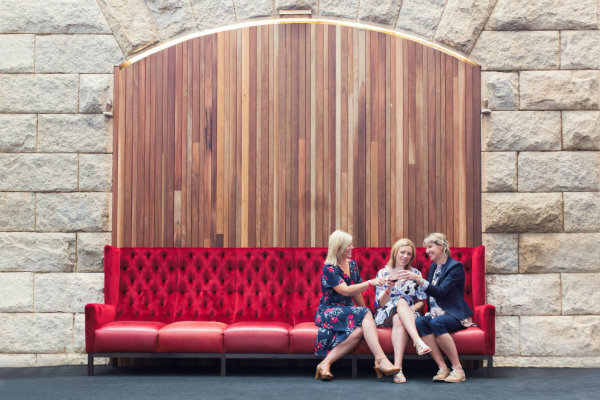
Bendigo Uncorked Week. Image supplied.
Running annually for more than 16 years, Heathcote Wine and Food Festival (6-7 October) offers visitors the opportunity to sample new release wines from the Heathcote region and learn more about wines that have recently achieved success in international and national awards; while Bendigo Uncorked Week (12-22 October) is a boutique event for lovers of fine wine and food, featuring everything from degustation walking tours to more casual tasting events.
Such events resonate with Regional Centre for Culture co-producer Elizabeth Walsh, who speaks passionately about the importance of ‘small c-culture’ in the region.
‘What we’ve been doing over the year – and indeed, we’ve got four events still to come in the second half of the year – is this idea that some people don’t consider normal activity like farmer’s markets or farming, the kind of local connection that those specific meeting points have, as cultural. So we’ve run a whole series of interventions in markets across the region where we’re asking people to talk about why they grow what they do, why they produce the things they do, and it’s been a really rich experience in terms of people talking about why they grow mushrooms and how they got into grape seed oil farming; that whole experience of people in their own communities celebrating the produce that they make,’ Walsh said.
Upcoming events as part of the Regional Centre for Culture program include Demolish at the Bendigo Showgrounds (11-15 December), which Jo Porter described as a creative response to colonisation and climate change.
‘The lead artists, Rebecca Russell and Ken Evans, live in Clunes, which is a very small town completely surrounded by farms. They have worked with a woman who is a fifth generation farmer in the area, and another woman called Linda Ford, who is of Dja Dja Wurrung heritage; her ancestors came from that country. They’ve been working around ideas about change and upset and colonisation and climate change; how we think about what we all think of as home and all of the things that impact on it. I think climate change is certainly important in that context, but so is this idea that you can be colonised by people just coming in and saying the land’s theirs. That’s pretty huge,’ Porter said.
.jpg)
Regional Centre for Culture. Image supplied.
Another event taking place in the coming months as part of the Regional Centre for Culture program is YAPENYA, a new Dja Dja Wurrung ceremony celebrating song, dance, language and culture.
‘It is incredibly generous of the Dja Dja Wurrung to invite us all to come and participate and be a part of that ceremony, and that’s a way that I’ve been thinking about it over the course of this year, as not so much a Welcome to Country so much as an Invitation to Country. It’s saying, “We’re extending the hand of collaboration. This is what the future might look like, and this is who we are,”’ Porter explained.
Taking place at Bendigo’s iconic Poppet Head in Rosalind Park – a tangible reminder of Bendigo’s gold rush era – Poppet (20 October) will activate the site with aerial acrobatics, dance, puppetry, music and interactive projections, in a collaboration between local artists and ACT Natimuk.
It’s a project especially close to Porter’s heart. ‘I love it because I think it helps people see their own place as something really special – it promotes the recognition that what’s there in your town is amazing,’ she concluded.
Visit www.bendigotourism.com for full program details.
